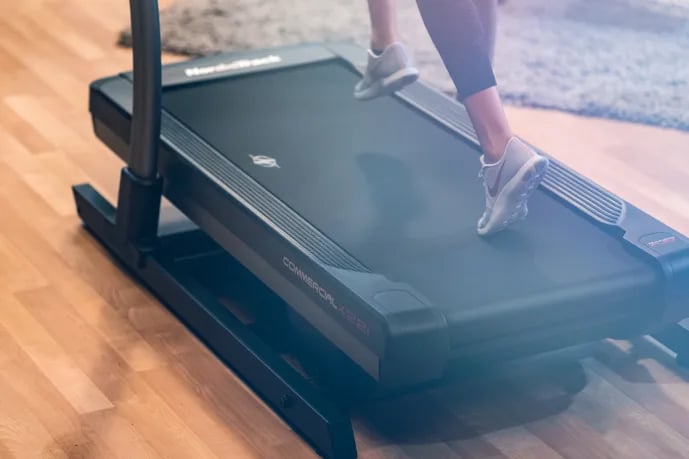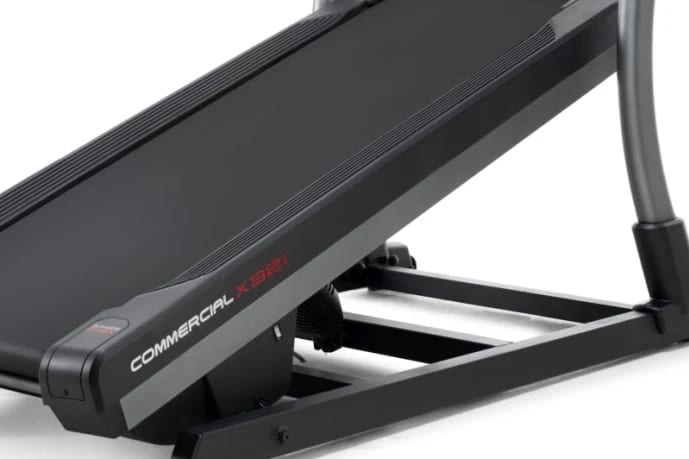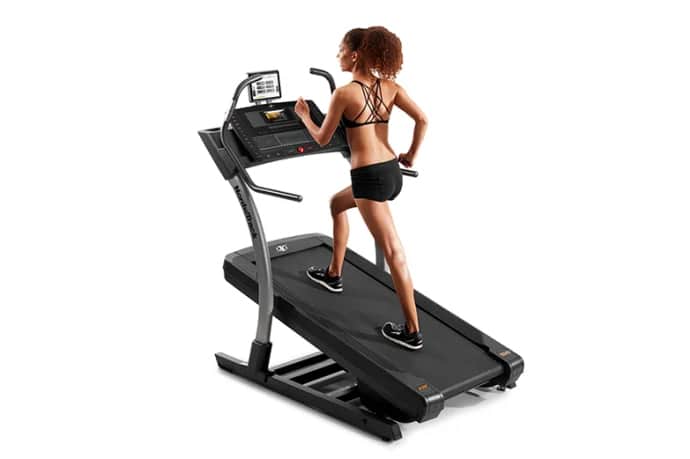
Contents
- The Benefits of a High Incline
- The Downside of Running Uphill
- Conclusion
- FAQs
- Uphill walking vs downhill walking
- Does a slight incline / walking uphill represent wind resistance?
- Is interval training the best treadmill workout?
- Is running with a treadmill set as a flat surface the same as running on flat ground?
- How do you develop strong posterior chain muscles?
- and will this help with my running?
You’re pounding away on the treadmill, working up a sweat and feeling the burn in your legs. You keep upping the incline, thinking that the harder you work, the better the results will be. But is there such a thing as too much of a good thing when it comes to treadmill inclines? Let’s take a closer look.
The Benefits of a High Incline
Treadmills with steeper inclines simulating running outdoors can offer some great benefits. A study published in The Journal of Strength and Conditioning Research found that running on an incline at 8% or greater created more muscle activity in the quads, glutes, and hamstrings than running on a level surface. That’s good news if you’re looking to tone your lower body.
In addition, research shows that running on an incline can also lead to a reduction in joint impact. A study published in Medicine & Science in Sports & Exercise found that runners who used a 12% incline had less ground reaction force—or impact—on their joints than those who ran on a level surface. So if you’re someone who is prone to joint pain or injury, upping the incline on your treadmill might be a good way to reduce your risk.


The Downside of Running Uphill
While there are some definite benefits to cranking up the incline on your treadmill, there are also some potential drawbacks that you should be aware of. First of all, running at a high incline can put extra stress on your heart and lungs. If you have any respiratory issues or are new to exercise, it’s best to start slow and build up gradually rather than going all-out from the get-go.
In addition, running at a very steep incline can actually place unnecessary stress on your knees and hips, which could lead to injuries over time. A study published in Knee Surgery, Sports Traumatology, Arthroscopy found that runners who used a 10% or higher incline had more knee and hip abduction moments—a measure of joint stress—than those who ran at shallower angles. So if you already have weak knees or hips, it might be best to stick with a moderate incline rather than going too high.
Conclusion
So what’s the verdict? When it comes to ‘how high of an incline is too high?’, there are benefits and drawbacks to cranking up the angle. If you’re new to exercise or have any respiratory issues, it’s best to start slow and increase the incline gradually over time. And if you have weak knees or hips, you might want to stick with a moderate angle rather than going too high. But if you’re looking to tone your lower body and reduce impact on your joints, then cranking up that treadmill incline could be just what you need!




FAQs
Uphill walking vs downhill walking
There are benefits and drawbacks to both uphill and downhill walking. Uphill walking (incline walking) is great for toning your lower body and reducing the impact on your joints, but it can put extra stress on your heart and lungs. Downhill walking (decline walking) is easier on your respiratory system, but it can place more stress on your knees and hips. Ultimately, the best type of walking for you is the one that you enjoy and can stick with long-term.
Does a slight incline / walking uphill represent wind resistance?
Yes, walking uphill on a treadmill simulates wind resistance. A treadmill’s incline can make your workout more challenging and help you to burn more calories. Focusing on the lower leg muscles, it can also help to tone your calves, quads, and glutes.
Is interval training the best treadmill workout?
Interval training is a great way to make your treadmill workout more challenging and interesting, and most treadmills can now accommodate such training in one way or another. However, it’s not the only type of workout you can do. If you don’t like interval training, there are other options available, such as endurance training, aerobic exercise, incline training or hill repeats. Ultimately, the best treadmill workout is the one that you enjoy and can stick with.
Is running with a treadmill set as a flat surface the same as running on flat ground?
No, running on a treadmill set at a 0% incline is not the same as running on flat ground. The surface of a treadmill is softer than concrete, asphalt or other hard surfaces, so it has a slightly different feel. In addition, the belt of a treadmill moves beneath your feet, which can make it feel like you’re running faster than you actually are. For these reasons, it’s best to set the treadmill at a slight incline (1-2%) to more accurately simulate running on flat ground.
How do you develop strong posterior chain muscles?
The posterior chain consists of the muscles that run down the back of the body, including the glutes, hamstrings, and erector spinae. There are a few different ways that you can develop strong posterior chain muscles, such as doing kettlebell swings, deadlifts, and good mornings. You can also try incorporating some balance exercises, such as single-leg deadlifts and Bulgarian split squats, into your routine. Ultimately, the best way to develop strong posterior chain muscles is to find a method that works for you and stick with it.
and will this help with my running?
Yes, developing strong posterior chain muscles will help with your running. Strong muscles in the posterior chain help to stabilize the body and provide power during the running motion. This can result in a more efficient running form and help you to run faster and longer.